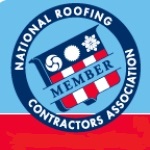East Meadow Roofing: Article About Reasons Why Roof Shingles Curl
A ventilation device located on the edge of the roof where the gutters are usually installed. The soffit vents prevent moisture from building up in the attic and damaging the shingles on the roof when the weather is hot and humid. During the winter, the soffit vents keep the roof cold and prevent ice dams from developing.
East Meadow roofing contractor answers a question: Do shingles have different curling patterns?The curling patterns of shingles differ depending on the cause of the problem. Curling may develop in the middle, corner or across the entire shingle. If the shingles start to deteriorate because of roof traffic or the removal of ice, they may curl in the corners. Curling in the middle of the shingle is often caused by the accumulation of moisture and improper ventilation. There is curling along the length of the shingle when the roofing materials are defective.

When shingles start to curl, they need to be fixed promptly, or the damage to the roof can get worse. Some of the causes of curled roof shingles are inadequate ventilation, exposure to extreme weather conditions and improper installation. Understanding why shingles curl enables you to take certain steps that will prolong their life expectancy. If you need to replace or install new shingles, a qualified East Meadow roofing professional can assist you.
Curling occurs when the bottom portion of the shingle absorbs the indoor heat coming from the attic or top floor of the house. If the bottom of the shingle is warmer than the top surface, the difference in temperature weakens the structure. Then, the shingles start to bend and curl upwards. If you notice curled shingles, it's an indication that their structure has been compromised.
Shingles are more susceptible to wear and tear due to poor workmanship. The shingles need air circulation to perform effectively. If the shingles are glued together and covered in layers of asphalt, it creates a waterproof barrier that protects the house from leaks. Unfortunately, it also makes it difficult for air to escape from beneath the shingles.
Have a question regarding skylights or Supreme skylights? Please ask a roofing professional from Long Island Roofing of East Meadow.
When there are high temperatures or heavy rain, the heat and moisture gets trapped under the shingles if there isn't proper ventilation. The heat isn't able to go anywhere if the soffit vents are blocked. The shingles continue to get warmer until the upper layers begin to curl. The shingles lose their flexibility and become brittle. In order to protect the longevity of the shingles, you need to make sure the soffit vents allow air to circulate and escape.
If the nails are placed properly, it can lead to curling. Driving the nail through the sealing strip negatively affects the effectiveness of the seal. The purpose of the sealing strip is to prevent the shingles from moving or lifting up. High temperatures during the day and cool temperatures at night can cause an improperly placed nail to protrude or pull out. If the nail doesn't remain in place, the shingle tab will separate from the seal and curl upwards.
Defective products are another cause of curling shingles. Poor quality materials such as inadequate bituminous coating, and substandard substrate make the products deteriorate sooner than expected. Even though the cost of materials is an important factor, the cheapest products may result in the premature degradation of the roof. Consult with a qualified contractor find out which products are best suited for your house.









